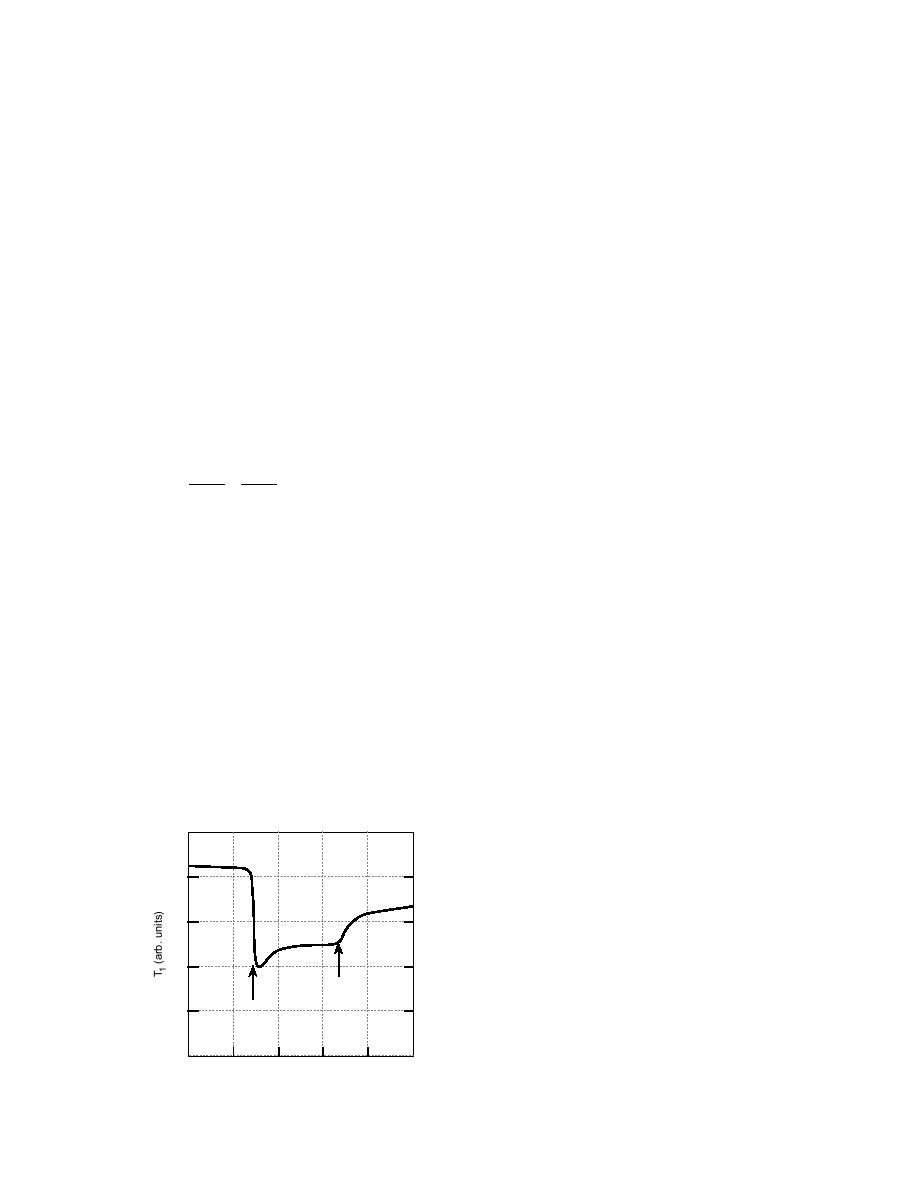
of the dielectric film, as shown in Figure 1. In a static
electrical field, ice behaves as a conductor so that the
polarity, in agreement with the experimental results.
entire bias is applied across the dielectric belt and the
When metallic belts made of aluminum or stainless
air gap between the belt and the ice cylinder. Since T2
steel foils were used, the effect of dc bias on friction
increases when frictional force increases, the effect
was comparable to the results obtained with dielectric
shown in Figure 9 corresponds to greater friction with
sliders (see Fig. 10). In this case the dc bias was ap-
the applied voltage. Within the limits of experimental
plied across the entire thickness of the ice between the
error ( 20%, determined by oscillations of T2), there
central metal cylinder and a metal slider. The effects of
was no difference in the effects of positive and nega-
positive and negative bias on friction were similar to
each other but not quite reversible. Namely, when the
higher temperatures (from 5 to about 10C), (T2
bias was switched off, it took a long time (several min-
utes at 30C) to restore the initial frictional force.
T1) becomes comparable with oscillations in the belt
tension because of the small magnitude of ice friction.
Since the electrical field vanishes during the much
This results in the fact that while the effect of a dc bias is
shorter time of about 0.1 second (this was a time con-
noticeable at these temperatures, it becomes much more
stant of the electrical circuit used), the observed effect
pronounced only when the temperature decreases.
of the electrical field on icemetal friction cannot be
The change in the frictional force can be explained
explained in terms of electrostatic pressure. However,
by means of electrostatic pressure Pel , which increases
even more serious evidence in favor of disregarding
the importance of electrostatic pressure comes from a
the normal pressure of the belt on ice
quantitative comparison of Pel and P0. While P0 re-
ε 0 E 2 ε 0V 2
mained the same, as in experiments with dielectric
Pel =
=
(12)
2 L2
sliders (about 1 kPa), Pel has not exceeded 0.18 Pa (see
2
eq 12). This smaller electrostatic pressure comes from
a larger L, across which the dc bias V was applied. In
where V = applied voltage
this case L was equal to the ice thickness (1.5 cm) since
E = electrical field strength at the ice/slider in-
the central metal cylinder and the metal belt acted as
terface
ε0 = dielectric permittivity of a vacuum
two electrodes attached to a poor conductor (ice). The
L = thickness of the belt.
absence of any sizable potential drop at the ice/metal
interfaces was proven by perfectly linear current volt-
Pel reaches a maximum in the absence of an air gap
age characteristics. The field effect was more pro-
between the ice and the slider. In this case and under
nounced at low temperatures for the same reason as in
conditions indicated in Figure 9, Pel = 4 kPa, which
the case of the dielectric sliders, that is better signal-to-
exceeds the average normal pressure P0 of the belt on
noise ratio.
ice by a factor of four. Under the experimental condi-
The application of electrical fields also increased
tions described, we can expect a fivefold increase in
static friction between ice and metals (see Fig. 11).
the apparent friction coefficient. Since we see a smaller
This phenomenon was very noticeable at temperatures
above 15C, at which it takes just a few seconds for a
effect, we assume that there was an average (and dynam-
metal belt to freeze to the ice cylinder. At lower tem-
ic) air gap between the ice and the slider of about 0.2
peratures, when a slider rested just few seconds be-
mm, sufficient to reduce the effect on the observed
30
29
28
27
Figure 10. Changes in tension of the aluminum belt
3 kV off
(T1) when a 3-kV bias is switched on and off (after
3 kV on
26
Petrenko 1994a). The smaller T1 is, the larger fric-
tion is (see Fig. 1). Temperature is 30C. Sliding vel-
25
0
5
10
20
25
15
0 and ≈0.47 immediately after V = 3 kV is turned
Time (s)
on.
8




 Previous Page
Previous Page
